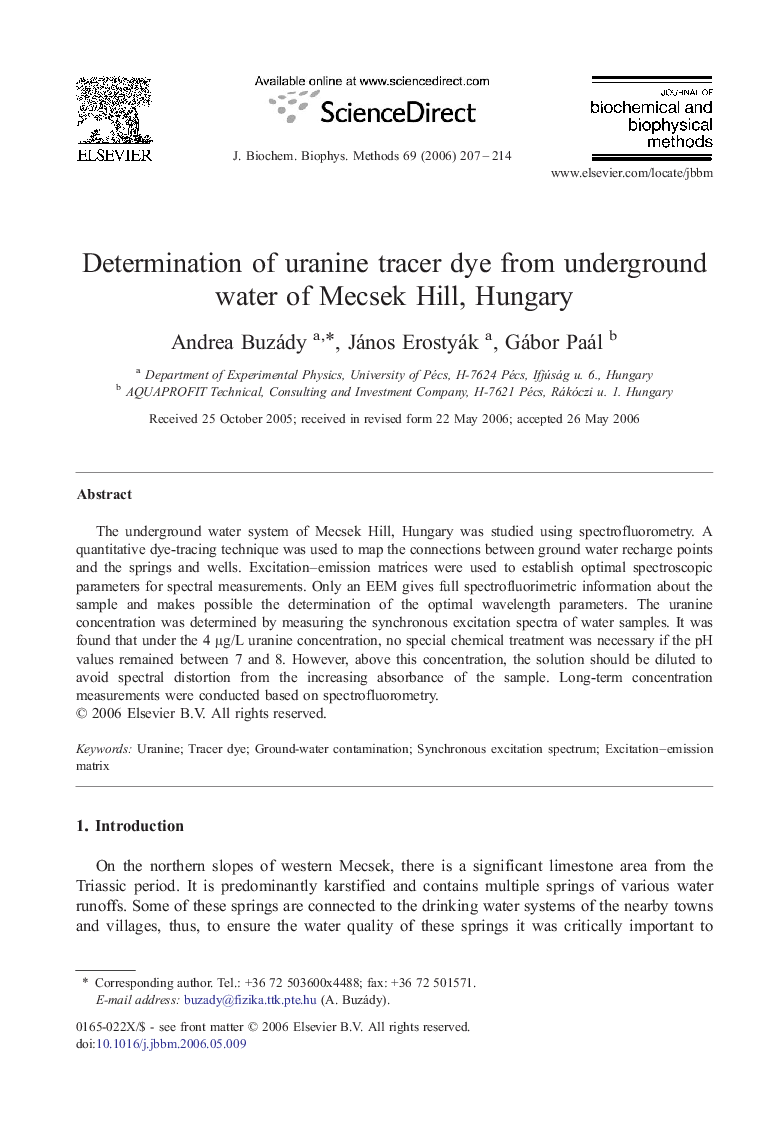| Article ID | Journal | Published Year | Pages | File Type |
|---|---|---|---|---|
| 1988510 | Journal of Biochemical and Biophysical Methods | 2006 | 8 Pages |
The underground water system of Mecsek Hill, Hungary was studied using spectrofluorometry. A quantitative dye-tracing technique was used to map the connections between ground water recharge points and the springs and wells. Excitation–emission matrices were used to establish optimal spectroscopic parameters for spectral measurements. Only an EEM gives full spectrofluorimetric information about the sample and makes possible the determination of the optimal wavelength parameters. The uranine concentration was determined by measuring the synchronous excitation spectra of water samples. It was found that under the 4 μg/L uranine concentration, no special chemical treatment was necessary if the pH values remained between 7 and 8. However, above this concentration, the solution should be diluted to avoid spectral distortion from the increasing absorbance of the sample. Long-term concentration measurements were conducted based on spectrofluorometry.
